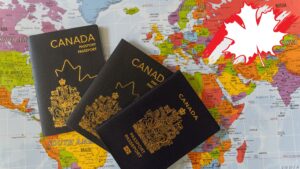Spiti Valley is an offbeat paradise for adventure seekers and nature enthusiasts alike. From trekking along towering cliffs and biking through rugged terrains to camping under a star-filled sky, Spiti Valley offers thrilling experiences for anyone who loves nature’s raw beauty. Below, we explore everything you need to know for an unforgettable Spiti Valley adventure: how to get there, must-see spots, the best times to visit, and tips for biking, camping, and trekking.

How to Reach Spiti Valley?
Getting to Spiti Valley is an adventure in itself. The valley can be accessed from two major routes: via Manali and via Shimla, each offering a unique and scenic journey.
You May Like
1. Manali to Spiti Valley Route
The most popular route is from Manali, especially for thrill-seekers who opt for a bike trip to Spiti Valley. This route offers some of the most rugged terrains and adventurous paths, passing through the Rohtang Pass and Kunzum Pass before reaching Kaza, Spiti’s main town.
- Distance: Approximately 196 km from Manali to Kaza.
- Best Time: June to October, when the roads are open and safer to navigate.
- Route Highlights: Rohtang Pass, Kunzum Pass, Chandra Taal Lake.
2. Shimla to Spiti Valley Route
The Shimla route offers a more accessible path and remains open for a longer period throughout the year.
- Distance: Approximately 420 km from Shimla to Kaza.
- Best Time: April to November.
- Route Highlights: Narkanda, Kalpa, Sangla Valley, and Tabo Monastery.
Whether you’re planning a bike trip to Spiti Valley or using public transport, the journey to Spiti is filled with breathtaking landscapes, towering mountains, and serene rivers.
Spiti Valley vs. Ladakh
When comparing Spiti Valley vs. Ladakh, both regions have unique attractions, but there are key differences that may help you choose the one that suits your adventure style:
1. Accessibility and Crowd
- Spiti Valley: Generally less crowded and offers a raw, untouched feel. Due to fewer tourists, it’s ideal for those seeking solitude.
- Ladakh: More accessible with more established tourist facilities, especially after it was declared a Union Territory.
2. Landscapes and Terrain
- Spiti Valley: Characterized by stark, arid mountains with an otherworldly charm, and is dotted with ancient monasteries.
- Ladakh: Known for its dramatic landscapes, including lush valleys, barren deserts, and vibrant Tibetan culture.
3. Activities and Adventure
- Spiti Valley: Offers more trekking options and isolated trails. Adventure here includes Spiti trekking, river rafting, and exploring untouched villages.
- Ladakh: Known for motorcycle expeditions, lake-side camping at Pangong Tso, and the thrill of crossing Khardung La Pass.
Spiti Valley is ideal for travelers seeking a more offbeat, secluded, and rugged adventure, while Ladakh is better suited for those wanting a mix of popular tourist attractions with thrilling high-altitude expeditions.
Top 10 Must-See Spots in Spiti Valley
While exploring Spiti Valley, here are ten must-visit spots that showcase the beauty, history, and culture of this Himalayan wonder:
- Key Monastery – An iconic Buddhist monastery perched on a hill overlooking the Spiti River. A haven for meditation and spiritual reflection.
- Chandratal Lake – Also known as the “Moon Lake,” this lake is a serene camping site surrounded by mountains, especially popular in Spiti Valley in August when it is most accessible.
- Kibber Village – Known as one of the highest motorable villages in the world, this picturesque village is perfect for experiencing local life and culture.
- Dhankar Monastery and Fort – 1,000-year-old monastery and fort with panoramic views of the Spiti River valley.
- Pin Valley National Park – Beautiful and biodiverse park home to rare species like the snow leopard and Siberian ibex.
- Tabo Monastery – One of the oldest functioning monasteries in India, often called the “Ajanta of the Himalayas” due to its ancient murals and frescoes.
- Langza Village – Famous for its ancient marine fossils and a massive Buddha statue overlooking the valley.
- Hikkim Village – Home to the world’s highest post office, where you can send a postcard from an altitude of over 4,400 meters.
- Komic Village – One of the highest inhabited villages in the world, with an altitude of around 4,587 meters.
- Lhalung Monastery – Known for its “Golden Temple” and spectacular artwork, this monastery is rich in history and deeply revered by locals.
Best Time to Visit Spiti Valley
Best time to visit Spiti Valley depends on the kind of experience you’re looking for:
- Summer (June to September): Most popular time for a Manali to Spiti Valley bike trip and other adventure activities like trekking and camping. Weather is pleasant, with clear skies and mild temperatures, making it ideal for exploring the outdoors.
- Monsoon (July to August): While Spiti Valley itself experiences minimal rainfall, landslides may occur on routes leading to it. Spiti Valley in August is still popular among travelers as the valley’s scenery is lush and vibrant.
- Winter (October to May): For those who enjoy extreme conditions, winter offers a unique, snow-covered landscape. Roads from Manali are closed due to heavy snowfall, but the Shimla route remains accessible.
Each season brings out a different charm in Spiti Valley, but for first-time visitors and adventure seekers, summer and late monsoon are considered the best times.
Trekking in Spiti Valley
Spiti Valley is renowned for some of the most thrilling and scenic trekking routes in the Himalayas. Here are some popular Spiti treks for those looking to explore its raw landscapes:
- Pin Parvati Pass Trek – High-altitude trek that connects the Parvati Valley of Kullu with Spiti Valley, providing awe-inspiring views of snow-capped peaks.
- Kaza to Langza Trek – Moderate trek that takes you through remote villages and offers views of snow-capped mountains and the Spiti River.
- Dhankar to Lhalung Trek – Spiritual trek that leads you through monasteries and ancient villages, perfect for immersing in the local culture.
- Hampta Pass to Spiti Valley Trek – Starting from Manali, this trek takes you across lush green valleys before descending into the barren landscapes of Spiti.
Tips for Trekking in Spiti Valley
- Acclimate Properly: High altitude of Spiti can cause altitude sickness, so it’s essential to acclimate for a day or two before setting out.
- Pack Accordingly: Weather can change unexpectedly, so pack layers and essentials like a first-aid kit, sunscreen, and high-energy snacks.
- Hire a Local Guide: Trekking in Spiti’s remote regions is best done with an experienced guide who knows the terrain well.
Camping in Spiti Valley
Camping in Spiti Valley offers an unparalleled opportunity to sleep under the stars amidst breathtaking landscapes. Here are some of the best camping spots in Spiti:
- Chandratal Lake – One of the most popular camping sites with a mesmerizing view of the lake and mountains.
- Pin Valley – Known for its rich flora and fauna, this is a beautiful site for nature lovers.
- Kaza Camping – Kaza, the main town in Spiti, has several organized campsites that offer comfortable facilities and easy access to nearby attractions.
- Langza and Hikkim – Camp near these villages for an authentic experience of Spiti’s local culture and access to some of the valley’s highest points.
Camping here provides a unique way to experience Spiti’s landscapes, offering quiet nights under starry skies in a region known for minimal light pollution.
Bike Trip to Spiti Valley
A bike trip to Spiti Valley is one of the most exhilarating ways to explore this Himalayan region. The rugged terrain, sharp bends, and high-altitude passes make it a challenging yet rewarding journey.
Popular Route for a Bike Trip
- Manali to Spiti Valley Route: The Manali route is favored by bikers for its high-adrenaline ride over Rohtang and Kunzum Passes, testing both skill and endurance.
Best Time for a Bike Trip
- June to September: Summer is the ideal time for a bike trip, as the roads are free of snow, and the weather is conducive for long rides.
Essential Tips for Biking
- Prepare Your Bike: Ensure your bike is in excellent condition and carry essential spare parts like tubes and a toolkit.
- Plan Fuel Stops: Fuel stations are scarce along the route, so plan your stops carefully.
- Pack Light: Since you’ll be riding over challenging terrains, packing light and carrying essentials only will make the journey smoother.
- Stay Hydrated and Acclimate: High altitudes can be demanding, so keep yourself hydrated and take breaks to acclimate along the way.
Spiti Valley is a treasure trove of thrilling adventures, offering trekking, camping, and road trips for those looking to escape the ordinary. Rugged terrains on a bike or trekking through ancient monasteries and villages, Spiti Valley promises unforgettable experiences that will captivate your spirit. From the best time to visit Spiti Valley to tips on trekking, camping, and biking, this guide should serve as your go-to for planning an exhilarating journey to this Himalayan haven.








